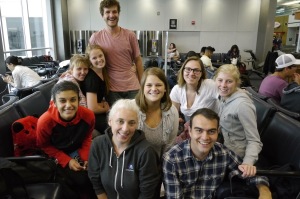
Group photo at the airport
It has been just over a year and I find myself back in Nicaragua. The week leading up to this trip was full and gave me little time to really processes what being back in the country would mean.
Stepping off the plane and into the airport sent a shock through my body, my first mouth full of gallo pinto, the heat and humidity, the feeling of my tongue haphazardly producing the right sounds of the Spanish language, and the first smile and hug from Father Chepe (president of the Universidad de Centro America). The love I have for this country and how comfortable it feels to be here is overwhelming. It amazes me that anyone would ever leave but that is exactly what is happening everyday and the reason that I have returned. I along with nine Seattle University Students and three professors are here to collaborate with students and faculty from the UCA and the staff and volunteers of the SJM (Servisos Jesuita para Immigrantes) on research surrounding the factors that cause so many Nicaraguans to leave their homes, families, communities, and country.
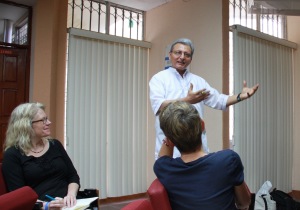
Father Chepe providing the opening lecture of the day
Our first day was spent on the UCA campus in lectures and seminars on a variety of topics that relate to the phenomena of emigration from Nicaragua and research and interview methodology. This was also the first day we met our Nicaraguan counterparts. Within the first hour of the day there was already profound conversations and discussion occurring and big topics being tackled. The students which we are collaborating are diverse in their interests and experience but the majority are studying economics, psychology, or social studies. In the later part of the afternoon we broke into research areas, Education, Violence, and the role of Women, and decided upon a research question. Each group consisted of a mix of students and faculty from both SU and UCA. After a long and successful first day the SU group returned to our hotel for dinner.
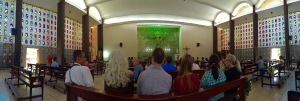
Panorama of the Church
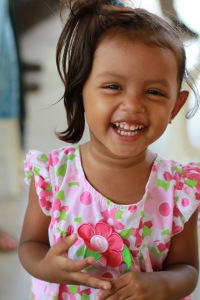
Alodra, 2 Her mother left her in the care of her grandmother so that she could migrate to Panama
Day Two began with a yoga class, which I lead in the courtyard of our hotel, which was followed by attending a mass at a jesuit church which serves the families of migrants in Managua. The church, one of the only buildings in managua to survive the 1972 earth quake, was a mix of soviet and post modern architecture with walls of cement and stained glass windows and a stone carving behind the alter depicting progress and advancement in science, life, and agriculture Nicaragua. After the service our group met with the mother of a migrant (Señora Evelin) who was caring for her child (the woman’s granddaughter),one of her other daughters (Sayra), and a man who had emigrated and returned (Fransisco). All of whom worked at the church in the kitchen that provided meals for the school next door. The conversation began with the Señora talking about how many daughters she had and how many had emigrated and how she was currently caring for her granddaughter (Alondra, 2) while her daughter worked in Panama. Sayra then spoke up, interrupting her mother to tell about her experience being trafficked with her sister and three friends in Guatemala, being forced to work in a club, and then of how she planned and executed her escape- walking 7 days to the Honduran border. Fransisco shared his story next, speaking about the grave discrimination he encountered during his time in New Mexico. All shared their stories with an openness and an air of resilience of which I haven’t experienced.
After our interviews we went to lunch at a restaurant recommended to us by members of our group. Many of the group ordered natural juices and cacao both promised to have been made with purified water. We toured around part of Managua after lunch, visiting the central square and a park on the lake with a model of what Managua looked like before the 1972 earthquake. We returned to the hotel to rest before having dinner with a man named Narcisso, an immigrant in Nicaragua from El Salvador. He works in a very poor neighborhood outside of Managua, working with youth as a teacher. He gave much needed context for our time in Chinandenga which we would travel to the following day.
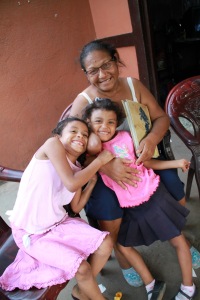
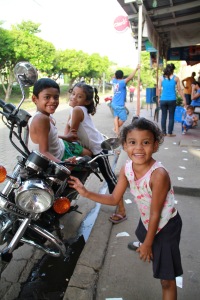
Day Three began with the discovery that 7 of the 12 members of the Seattle University group were sick with food poisoning and that a hospital visit would be required. Thanks to our friends at the UCA the group was whisked away to the ER while four of us, including myself pushed on to Chinandenga with the rest of the students and faculty from the UCA. We arrived in Chinandenga at noon, settling into the hotel and having lunch with volunteers from the SJM. After lunch we split into two groups and proceeded to interview different families in two different neighborhoods. My group met with a gentleman who’s brothers and sisters had migrated to Panama and El Salvador. He had not migrated but lead and organized groups of families of migrants. We then met with his mother, who is caring for three grandchildren (Ages 5, 7, and 9). She spoke about the negative impacts of migration and the separation of her family. Her son, she said, was trying to make money to send back to send his children to school but they do not want to go. “They need their father and mother” she said. The youngest knows her father only by the ragged photo that hangs on their all.